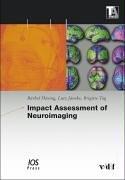| Listing 1 - 4 of 4 |
Sort by
|
Book
ISBN: 1280937505 9786610937509 0387719784 0387719776 1441944222 Year: 2007 Publisher: New York, NY : Springer US : Imprint: Springer,
Abstract | Keywords | Export | Availability | Bookmark
 Loading...
Loading...Choose an application
- Reference Manager
- EndNote
- RefWorks (Direct export to RefWorks)
Spatial Processing in Navigation, Imagery and Perception serves as a state-of-the-art platform, on which the very latest developments in spatial processing are presented. Spatial processing is centrally involved in almost any cognitive function and the neural underpinnings of spatial functions are much more complex than they have been conceived before. Studying spatial processing helps to explore how basic cognitive functions operate such as language, attention, perception, movement control and mental imagery. The processing of spatial information is distributed in complex cortical and sub-cortical structures and we are now in a position to better understand the underlying neuroanatomy and neurophysiology. This is made possible by the advent of novel techniques such as structural and functional in vivo anatomy, modeling, and sophisticated behavioral research tools. Modern neuroscientific techniques have been in many ways the catalyst of this research but there is also a revival of behavioral methods used in studies on spatial processing. It is in fact the fruitful combination of both the neuroscientific and behavioral approaches why this exciting field has progressed so far and is still progressing for many years to come. Research on spatial processing is not only restricted to basic science but rather has important applied implications. It is tremendously important to know how the human brain is accomplishing spatial tasks in real life scenarios such as driving a car, orienting oneself in large scale cities, postural control or playing various sports like baseball, soccer or tennis. Moreover, knowing more about plasticity and training related influences on spatial functions will have a huge impact on how to efficiently insert new technologies in everyday life. The findings presented in Spatial Processing in Navigation, Imagery and Perception emerge from different disciplines such as cognitive neuroscience, cognitive psychology, neuropsychology, neuroanatomy, computer science and robotics. The reader will learn to see several connections across these disciplines. Chapter authors are the most respected and internationally renowned researchers in the field. This book will be useful for experimental scientists, clinicians and graduate students.
Human information processing. --- Space perception. --- Information processing, Human --- Bionics --- Information theory in psychology --- Perception --- Spatial perception --- Spatial behavior --- Figure-ground perception --- Geographical perception --- Neurosciences. --- Consciousness. --- Neurobiology. --- Psychology, clinical. --- Cognitive Psychology. --- Neuropsychology. --- Neurosciences --- Apperception --- Mind and body --- Philosophy --- Psychology --- Spirit --- Self --- Neural sciences --- Neurological sciences --- Neuroscience --- Medical sciences --- Nervous system --- Cognitive psychology. --- Neurophysiology --- Psychophysiology --- Psychology, Cognitive --- Cognitive science
Digital
ISBN: 9780387719788 Year: 2007 Publisher: Boston, MA Springer Science+Business Media, LLC
Abstract | Keywords | Export | Availability | Bookmark
 Loading...
Loading...Choose an application
- Reference Manager
- EndNote
- RefWorks (Direct export to RefWorks)
Cognitive psychology --- Psychology --- Physiology of nerves and sense organs --- Neuropathology --- neurologie --- cognitieve psychologie --- neuropsychologie --- neurobiologie
Book
ISBN: 9780387719788 Year: 2007 Publisher: Boston MA Springer US
Abstract | Keywords | Export | Availability | Bookmark
 Loading...
Loading...Choose an application
- Reference Manager
- EndNote
- RefWorks (Direct export to RefWorks)
Spatial Processing in Navigation, Imagery and Perception serves as a state-of-the-art platform, on which the very latest developments in spatial processing are presented. Spatial processing is centrally involved in almost any cognitive function and the neural underpinnings of spatial functions are much more complex than they have been conceived before. Studying spatial processing helps to explore how basic cognitive functions operate such as language, attention, perception, movement control and mental imagery. The processing of spatial information is distributed in complex cortical and sub-cortical structures and we are now in a position to better understand the underlying neuroanatomy and neurophysiology. This is made possible by the advent of novel techniques such as structural and functional in vivo anatomy, modeling, and sophisticated behavioral research tools. Modern neuroscientific techniques have been in many ways the catalyst of this research but there is also a revival of behavioral methods used in studies on spatial processing. It is in fact the fruitful combination of both the neuroscientific and behavioral approaches why this exciting field has progressed so far and is still progressing for many years to come. Research on spatial processing is not only restricted to basic science but rather has important applied implications. It is tremendously important to know how the human brain is accomplishing spatial tasks in real life scenarios such as driving a car, orienting oneself in large scale cities, postural control or playing various sports like baseball, soccer or tennis. Moreover, knowing more about plasticity and training related influences on spatial functions will have a huge impact on how to efficiently insert new technologies in everyday life. The findings presented in Spatial Processing in Navigation, Imagery and Perception emerge from different disciplines such as cognitive neuroscience, cognitive psychology, neuropsychology, neuroanatomy, computer science and robotics. The reader will learn to see several connections across these disciplines. Chapter authors are the most respected and internationally renowned researchers in the field. This book will be useful for experimental scientists, clinicians and graduate students.
Cognitive psychology --- Psychology --- Physiology of nerves and sense organs --- Neuropathology --- neurologie --- cognitieve psychologie --- neuropsychologie --- neurobiologie

ISBN: 1586036130 9781586036133 Year: 2006 Publisher: Amsterdam IOS
Abstract | Keywords | Export | Availability | Bookmark
 Loading...
Loading...Choose an application
- Reference Manager
- EndNote
- RefWorks (Direct export to RefWorks)
| Listing 1 - 4 of 4 |
Sort by
|

 Search
Search Feedback
Feedback About
About Help
Help News
News